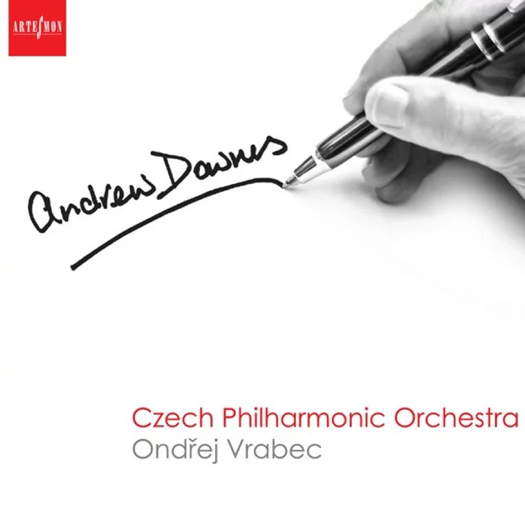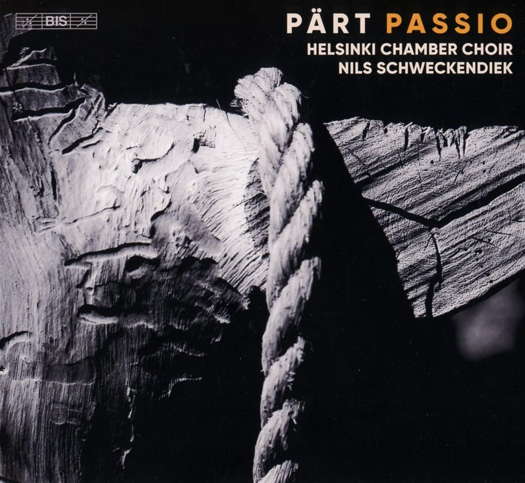 SPONSORED: CD Spotlight. On Buoyant Form - Orchestral music by Andrew Downes, heard by Roderic Dunnett.
SPONSORED: CD Spotlight. On Buoyant Form - Orchestral music by Andrew Downes, heard by Roderic Dunnett.
All sponsored features >>
 VIDEO PODCAST: John Dante Prevedini leads a discussion about Classical Music and Artificial Intelligence, including contributions from George Coulouris, Michael Stephen Brown, April Fredrick, Adrian Rumson and David Rain.
VIDEO PODCAST: John Dante Prevedini leads a discussion about Classical Music and Artificial Intelligence, including contributions from George Coulouris, Michael Stephen Brown, April Fredrick, Adrian Rumson and David Rain.
 DISCUSSION: John Dante Prevedini leads a discussion about Classical Music and Politics, including contributions from Béla Hartmann and James Ross.
DISCUSSION: John Dante Prevedini leads a discussion about Classical Music and Politics, including contributions from Béla Hartmann and James Ross.

Culmination of the 'Tintinnabuli' Style
GERALD FENECH listens to Arvo Pärt's St John Passion
'... powerful and emotional stuff performed with devotional ardour and spiritual rigour.'
Arvo Pärt was born on 11 September 1935 in Paide, Estonia. As a student, Pärt produced music for film and stage, and was raised by his mother and stepfather. He began to experiment with the top and bottom notes of the family's piano as the middle register was damaged. Pärt's musical education began at the age of seven when he began attending music school in Rakvere. By his teenage years, he was already writing his own compositions.
His first serious study came in 1954 at the Tallinn Music Middle School, but less than a year later he temporarily abandoned it to fulfil military service, playing oboe and percussion in the army band. After this military phase he attended the Tallinn Conservatory, where he studied composition with the renowned Heino Eller. He graduated in 1963 and from then on his career was off in earnest. Still, not all was smooth and easy. A year before, he was criticised for employing serialism in Nekrolog, the first twelve-tone music written in Estonia. But nine months later Pärt won First Prize in a competition of 1,200 works, awarded by the all-Union Society of Composers, indicating the Soviet regime's inability to agree on what was permissible.
His first overtly sacred piece, Credo (1968), was a turning point in his life and career. On a personal level he had reached a creative crisis that led him to renounce the techniques and means of expression used so far. On a social level, the religious nature of the piece resulted in him being unofficially censured and his music disappearing from the concert halls. For the next eight years compositions were at a premium, and instead Pärt concentrated his efforts on studying medieval and Renaissance music to find his new musical language. In 1972 he converted from Lutheranism to Orthodox Christianity.
In 1976 Pärt re-emerged as a composer by introducing his new compositional style and technique called 'tintinnabuli'. On 10 December 2011, Pope Benedict XVI appointed Pärt a member of the Pontifical Council for Culture for a five-year renewable term.
Pärt is often identified with minimalism and, more specifically, with mystic or holy minimalism, but although his fame rests mainly on his instrumental pieces, his choral works have come to be widely appreciated. When Pärt left Estonia for Austria in 1980, he took with him the first sketches for the St John Passion, which would become the culmination of the 'tintinnabuli' style. He eventually finished the work in 1982, and it was published in 1989. Since then it has been recorded four times, which includes the version under review, and it remains one of his most popular works.
Listen — Arvo Pärt: Jesum Nazarenum (St John Passion)
(track 3, 1:41-2:30) ℗ 2021 BIS Records AB :
In much the same way that Pärt was inspired by medieval music in his creation of 'tintinnabuli', here too he is inspired by the earliest monophonic settings of the Passion. The St John Passion is a through-composed setting of the text of St John (Chapters 18-19), preceded by a short introduction and followed by a brief conclusion.
Listen — Arvo Pärt: Qui passus es pro nobis (St John Passion)
(track 11, 0:25-0:54) ℗ 2021 BIS Records AB :
He uses a baritone soloist for Jesus, a tenor for Pilate and a Soprano-Alto-Tenor-Bass (SATB) quartet for the Evangelist. In addition there are four solo instruments (oboe, violin, cello and bassoon), an organ and (SATB) choir. The work is not broken into movements and lasts some seventy minutes.
Listen — Arvo Pärt: Numquid et tu ex discipulis ejus es? (St John Passion)
(track 5, 0:00-0:52) ℗ 2021 BIS Records AB :
This is music that instils serenity, inspiration and a profound feeling that touches the very depths of one's spirit. I have no doubt that even those who are lukewarm to any kind of belief will still be moved.
Listen — Arvo Pärt: Crucifige, crucifige eum (St John Passion)
(track 6, 13:47-track 7, 0:23) ℗ 2021 BIS Records AB :
This is powerful and emotional stuff performed with devotional ardour and spiritual rigour.
It is a welcome choral addition to the discography of one of the finest living composers of sacred music. Sound and annotations are first-rate.
Copyright © 3 November 2021
Gerald Fenech,
Gzira, Malta

CD INFORMATION - ARVO PÄRT: PASSIO
MORE CLASSICAL MUSIC ARTICLES ABOUT ESTONIA


